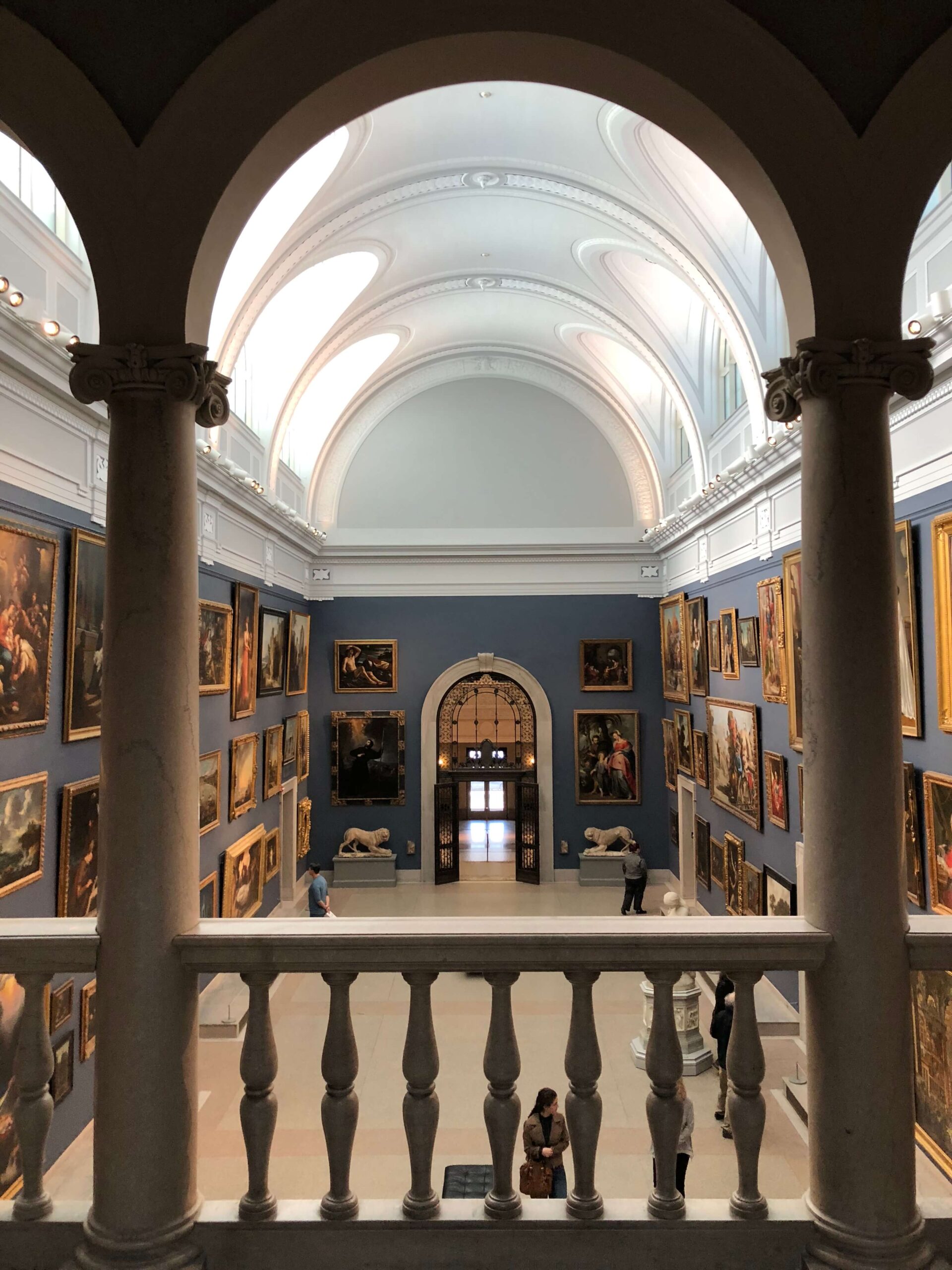The Wadsworth Athenaeum*, in Hartford, CT, is one of America’s oldest art museums. It was founded by Daniel Wadsworth in 1842. However, it has been expanded several times since them. The museum has a little bit of everything, from paintings to porcelain, ancient Egyptian to contemporary European. The museum is a very pleasant place to spend an afternoon. It’s a bit difficult to navigate, probably because it’s undergone so many expansions, but you can definitely enjoy the entire collection in a day. Below are some of the highlights, in my opinion.
*In case you are wondering, according to Merriam Webster Online Dictionary, an athenaeum is “1. a building or room in which books, periodicals, and newspapers are kept for use 2. a literary or scientific association”. Lots of museums and similar establishments have “Athenaeum” in their names.
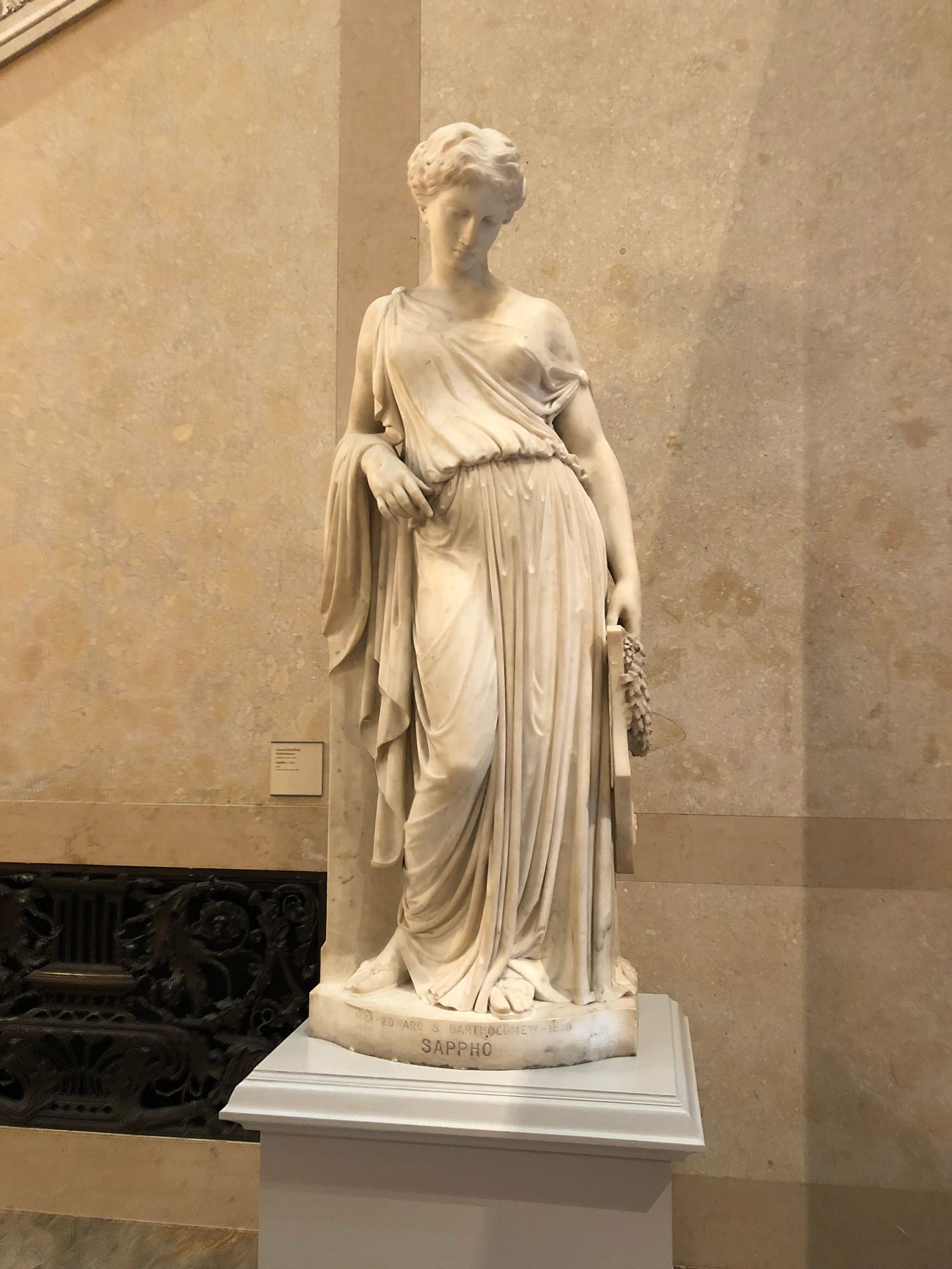
Hey everybody! I’m just reminding you that everything in a museum is subject to change – exhibitions, artworks on display, opening times, and prices. I can only tell you what the museum was like the last time I was there, which might not stay the same. It’s not only that exhibitions change and prices increase; I’ve revisited museums and found their fundamental personalities to be really different from my last visit (or that half their galleries are closed for renovation). I know how sad a disappointing museum visit can be, so I’m reminding you to check everything out on the museum’s website ahead of time.
George Catlin Saves the Day
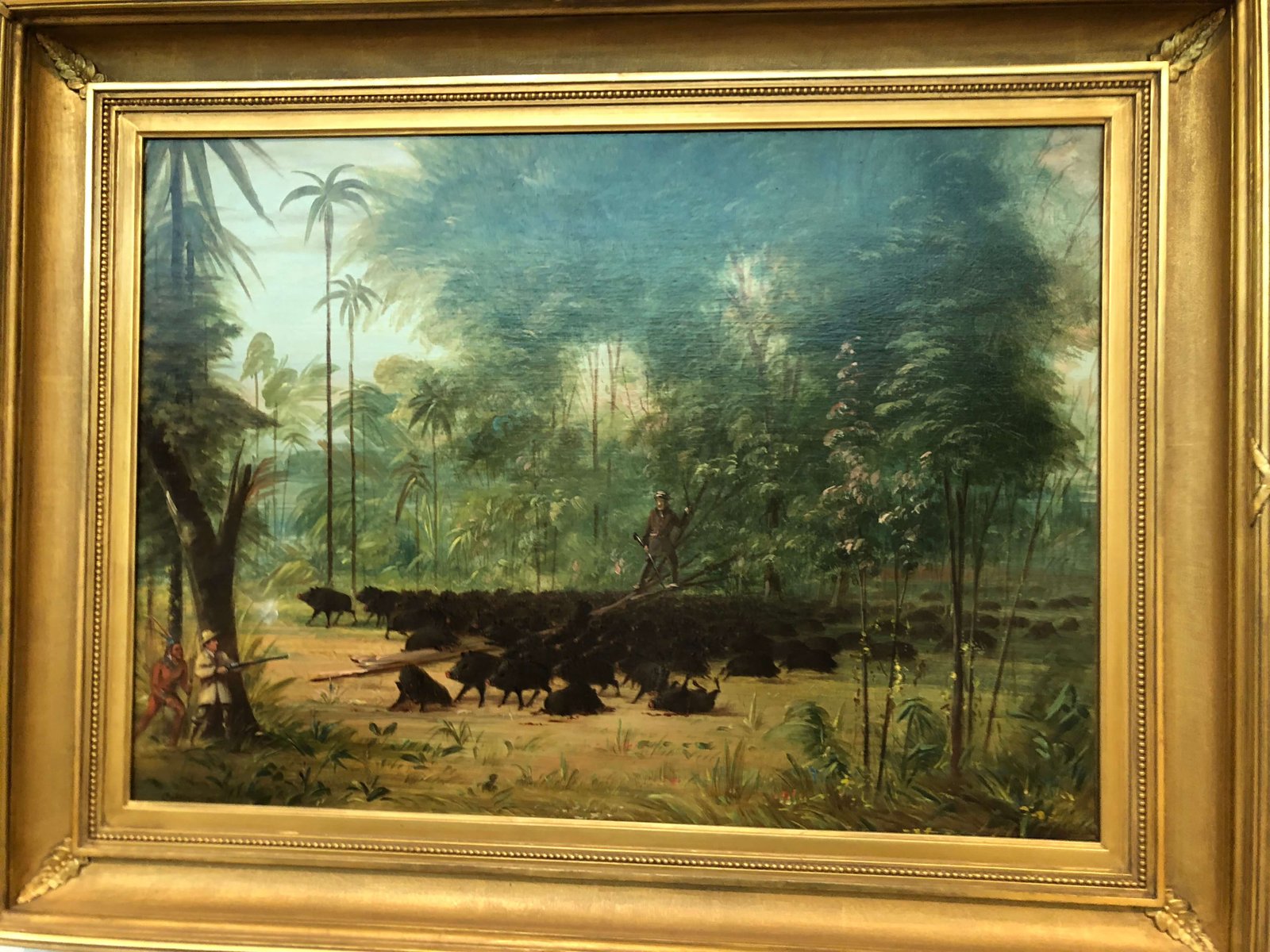
In the American decorative and fine arts collections, the museum really celebrates local Hartford artists and patrons. For example, it has a collection of objects once owned by Samuel Colt, the founder of Hartford-based Colt Firearms. The Colt collection includes four paintings by George Catlin, an American artist known for his western paintings. Colt commissioned these paintings to promote Colt firearms. In each, Catlin showed himself as an adventurous hero saving the day with firearms. For example, one painting has the extensive and descriptive title of Catlin, the Artist & Sportsman Relieving One of his Companions from an Unpleasant Predicament during his Travels in Brazil (1854). The “predicament” – a pack of wild boars – was quite clear, but I had a really difficult time deciding which figure represented Catlin and which was the imperiled friend. Not sure what to make of that. Although the subject matter is definitely weird, this painting and the other three had a cartoonish quality that I greatly enjoyed.
Florine!
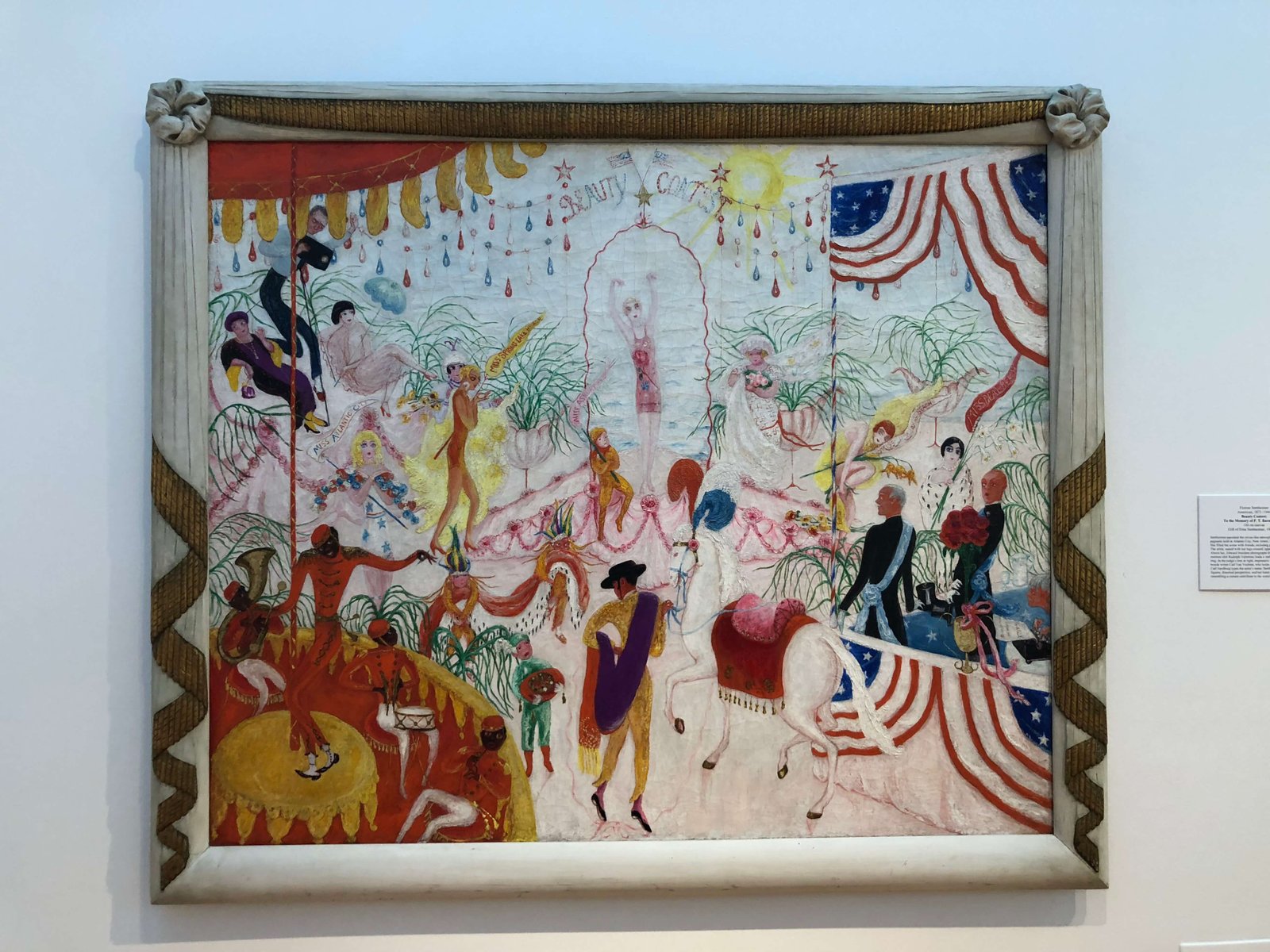
We’ve already established how much I adore Florine Stettheimer, so I was really excited to see one of her large paintings here. Entitled Beauty Contest: To the Memory of P. T. Barnum (1924), it depicts a beauty queen being crowned on the New Jersey shore. With whimsical figures in graceful and unusual poses, bright colors, lots of text, and a generally joyful feeling, it’s Florine at her very best.
The Lady of Shalott
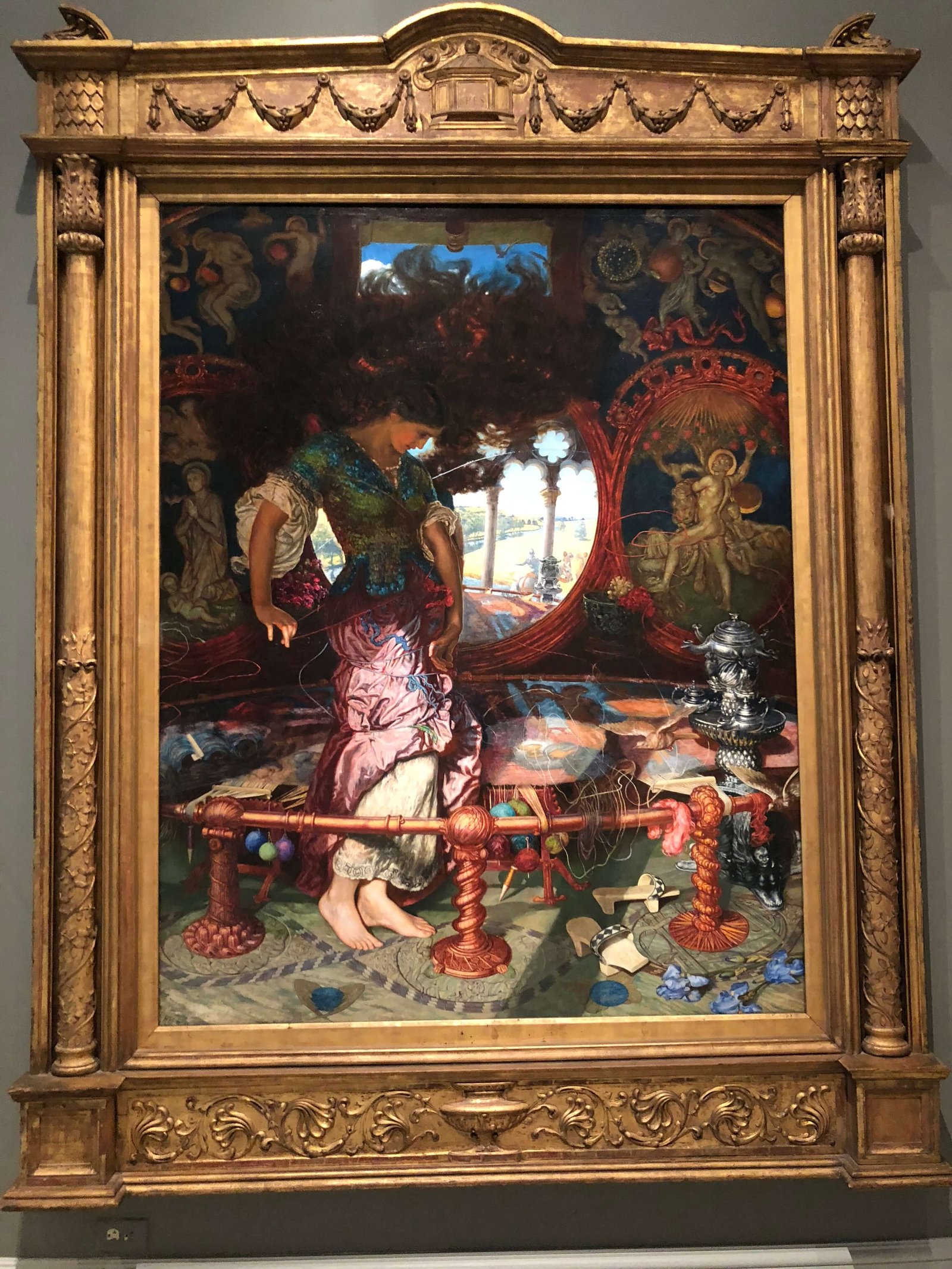
The Lady of Shalott (c. 1890-1905) by William Holman Hunt is a real standout work in this museum. (Clearly, the museum agrees, since she’s all over the gift shop items and promotional material.) The painting is massive, brilliantly colored, and highly detailed. There’s a wonderful sense of drama and movement here, with the lady’s hair and the strands of her unravelling weaving all blowing around in a wind that’s so tangible you can almost hear it. The shine of the metals and opalescent tones of her clothing caught my eye the moment I entered the room. The background is detailed and a bit fantastical, with a glimpse near the center of the outside world that was forbidden to the poor lady. The Lady of Shalott was a character from Arthurian legend who was the subject of Alfred, Lord Tennyson’s poem of the same name. This painting is an example of how spectacular the Pre-Raphaelite and Aesthetic Movements can be.
Cabinet of Art and Curiosity
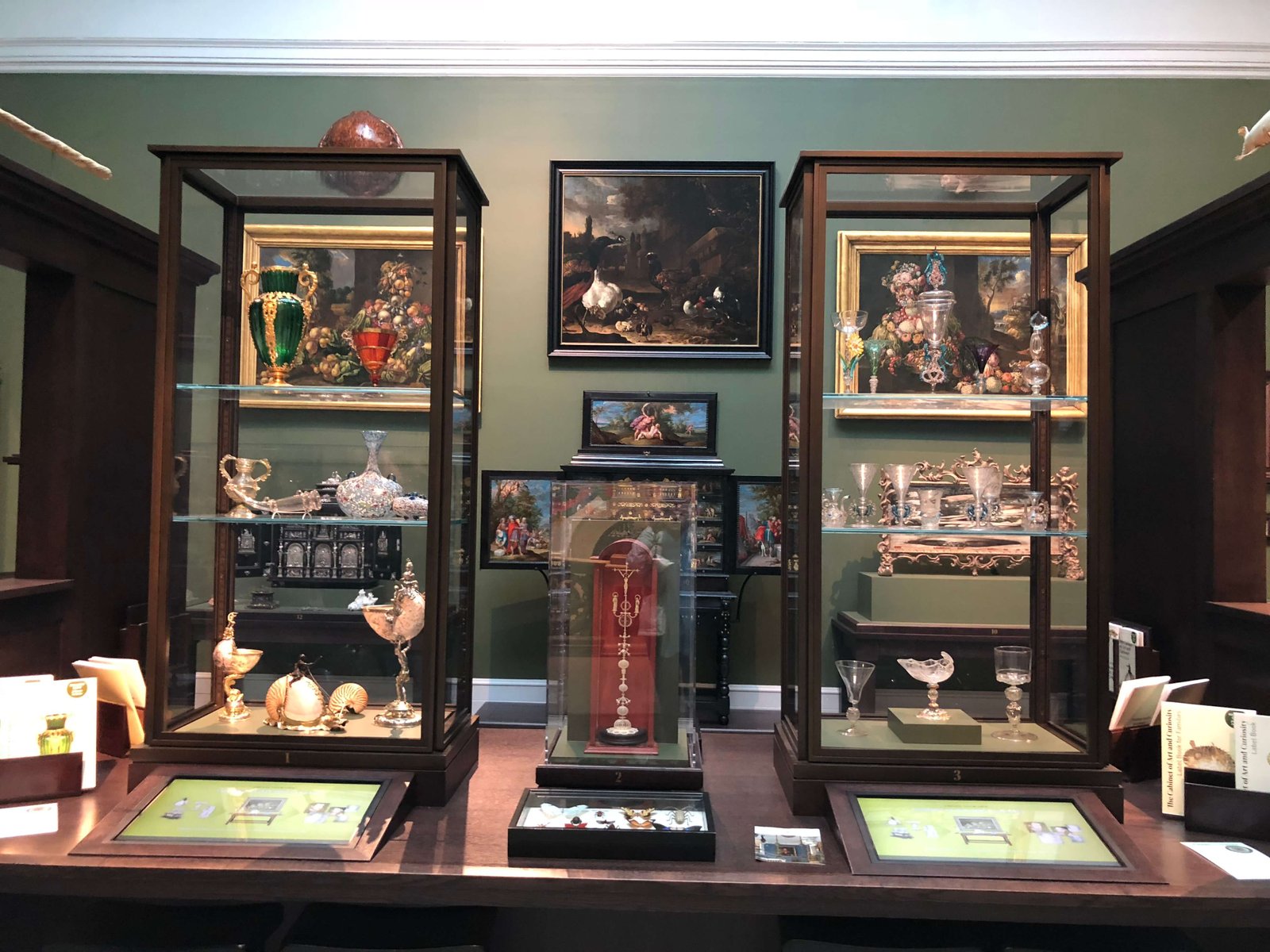
The Wadsworth Athenaeum has a small gallery called the “Cabinet of Art and Curiosity”. It mimics a cabinet of curiosities, which was a collection of art, artifacts, scientific specimens, and other curiosities often collected by the rich nobility in the Renaissance. These cabinets were the forerunners of the modern museum. The Wadsworth’s cabinet includes small works of art, antiquities, decorative arts, and samples of minerals, insects, shells, and more. It’s arranged the way I would expect that a historical cabinet of curiosities to have been, with lots of stuff packed together, often on and in pieces of furniture, and without labels. It has a much more cozy and intimate feeling than any of the other galleries. There are touch screens that visitors can use to create their own cabinet of curiosities, but I didn’t try them.
The Architecture of the Morgan Wing
In the 1890s, the Wadsworth Athenaeum received a substantial donation from the estate of Junius Spencer Morgan. His son, the famous J. P. Morgan, paid for a new wing to house the collection; it was designed by Benjamin Winstar Morris and build in 1910-5. Morgan’s donation includes some great pieces, such as beautiful Head of an Angel by Fra Angelico, but the Morgan Wing is also just so beautiful all by itself. The elegant metal doors and stained glass sky light are particularly stunning.
The Great Hall
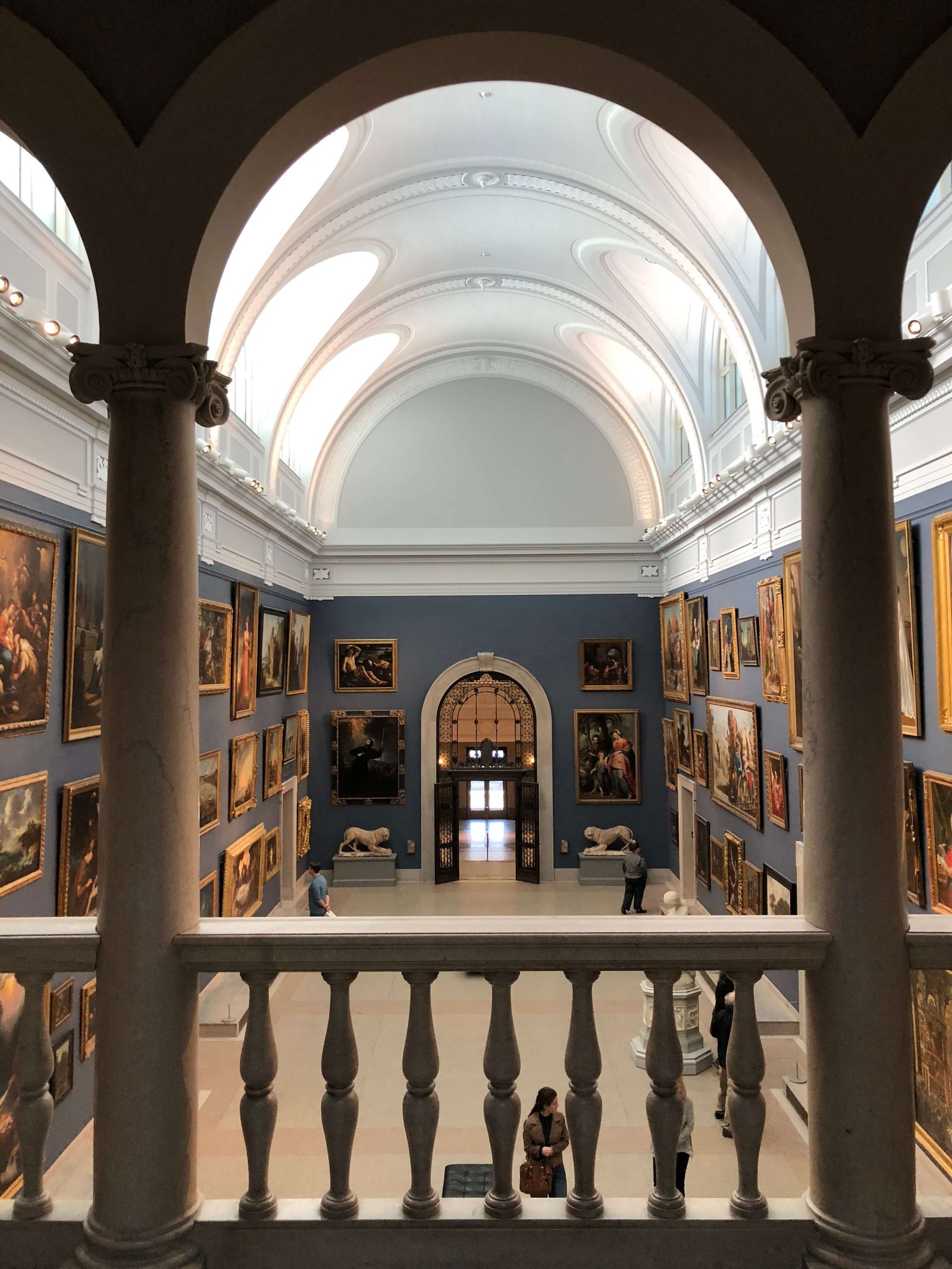
The Morgan Wing has a gorgeous, Great Hall hung salon-style with rows of large European paintings. It was the first gallery I saw, and I loved it! Salon-style galleries, in which paintings cover the walls high and low instead of hanging in one row at eye level, used to be the primary way paintings were displayed. These days, they’re rare, though I did see another one at the Yale Center For British Art last year . This arrangement has the obvious downside that paintings on the highest rows are difficult to see, particularly here in the two-story Great Hall. However, a balcony at one end made it possible to enjoy some of the higher-up paintings from the second floor. While I didn’t get to look at each painting as closely as I would have liked to, I did find the overall effect really cool, and I stopped back in this gallery several more times throughout my visit. Two of my favorite paintings in this gallery showed other great, salon-style galleries – The Picture Gallery of Cardinal Silvio Valenti Gonzaga (1749) by Giovanni Paolo Panini and Benjamin West’s Picture Gallery (c. 1821) by John Pasmore II. There was also a lovely Raphael.
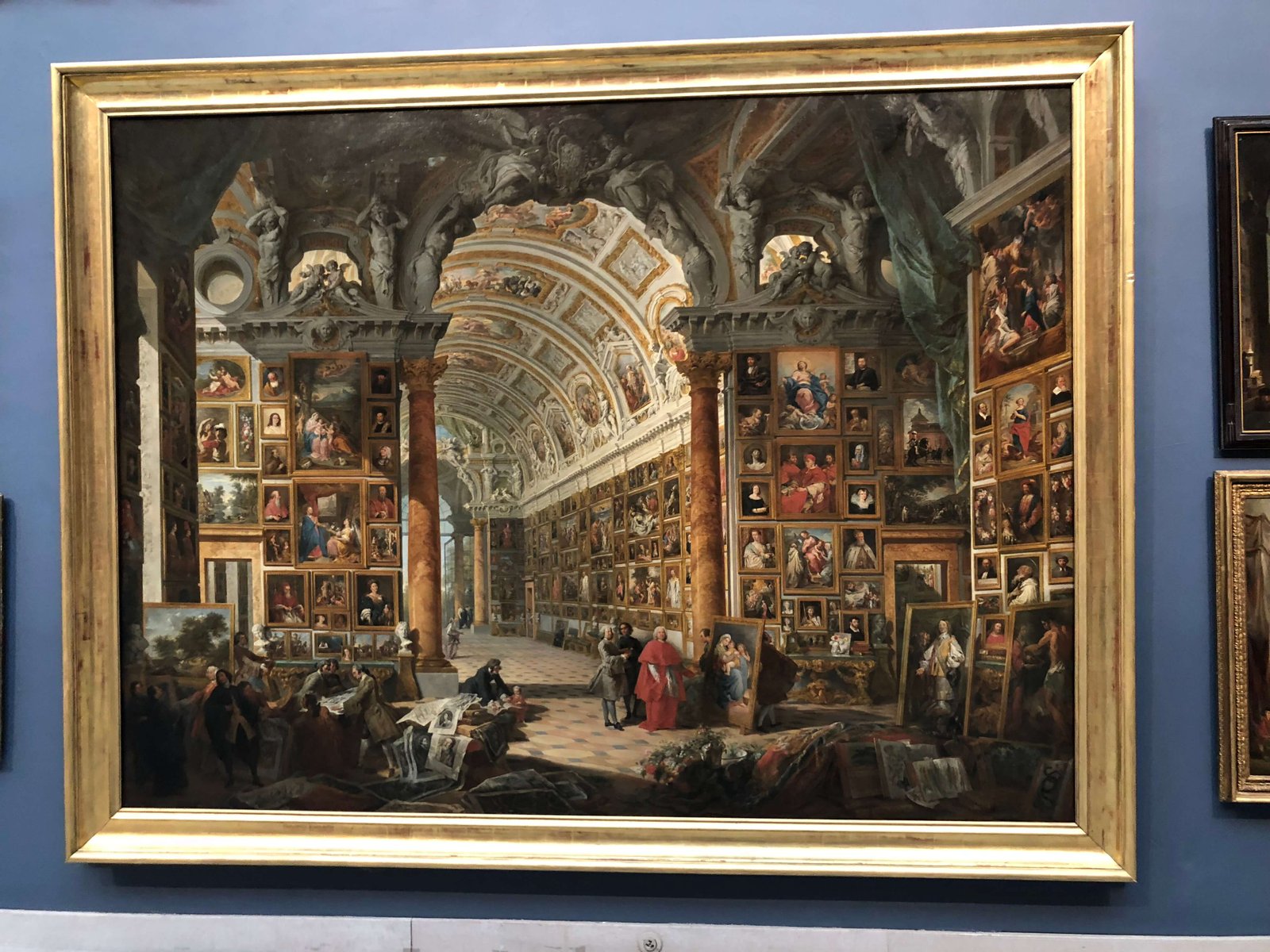
Hudson River School Paintings
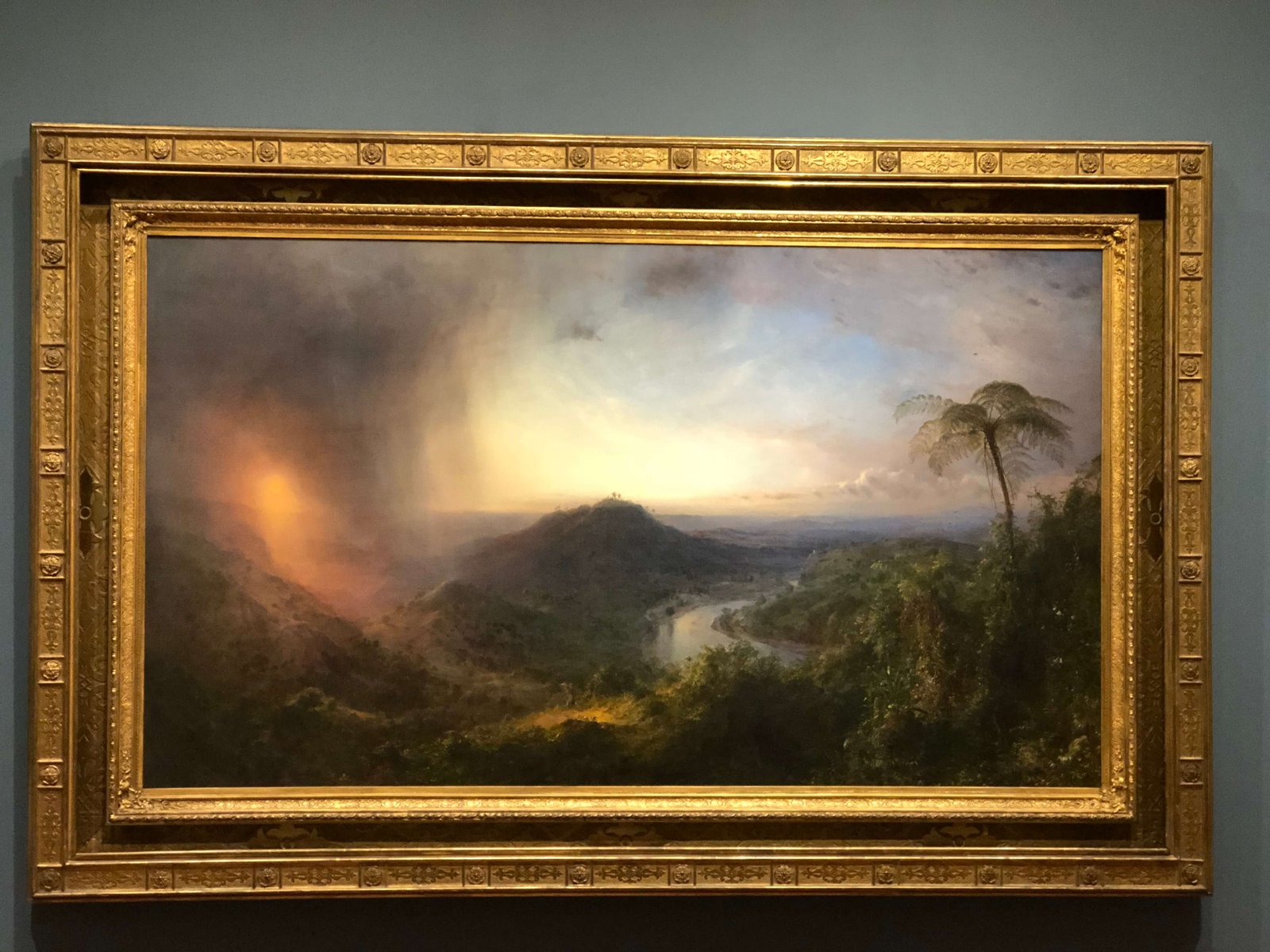
The Wadsworth Athenaeum has a strong, though not especially large, collection of American paintings, including many by Hudson River School artists. Vale of St. Thomas, Jamaica by Frederick Edwin Church is among the most important, but there are also several works by Thomas Cole, including a huge, picturesque Italian vista, a few paintings of Niagara Falls by various artists, a lovely George Inness, and some beautiful Western scenes by Albert Bierstadt and Thomas Moran.
Details
The Wadsworth Athenaeum Museum of Art is located in Hartford, Connecticut. It’s open Wednesday through Friday, 11 am – 5 pm and Saturday/Sunday 10 am – 5 pm. General admission costs $15 for adults, $12 for seniors, $5 for college students, and free for Hartford residents and anyone under 18. There is a parking deck on Front Street, a few blocks away, that offers $3 flat rate parking for museum patrons. You have to have your ticket validated in the gift shop. There’s also limited street parking. The museum has a sit-down café. It’s not the usual quick bite you can get at many other museums, but the food is delicious and not too expensive. There’s also a nice gift shop and an art library. There’s a lot to see, but the museum can be difficult to navigate, so be sure to get a map.
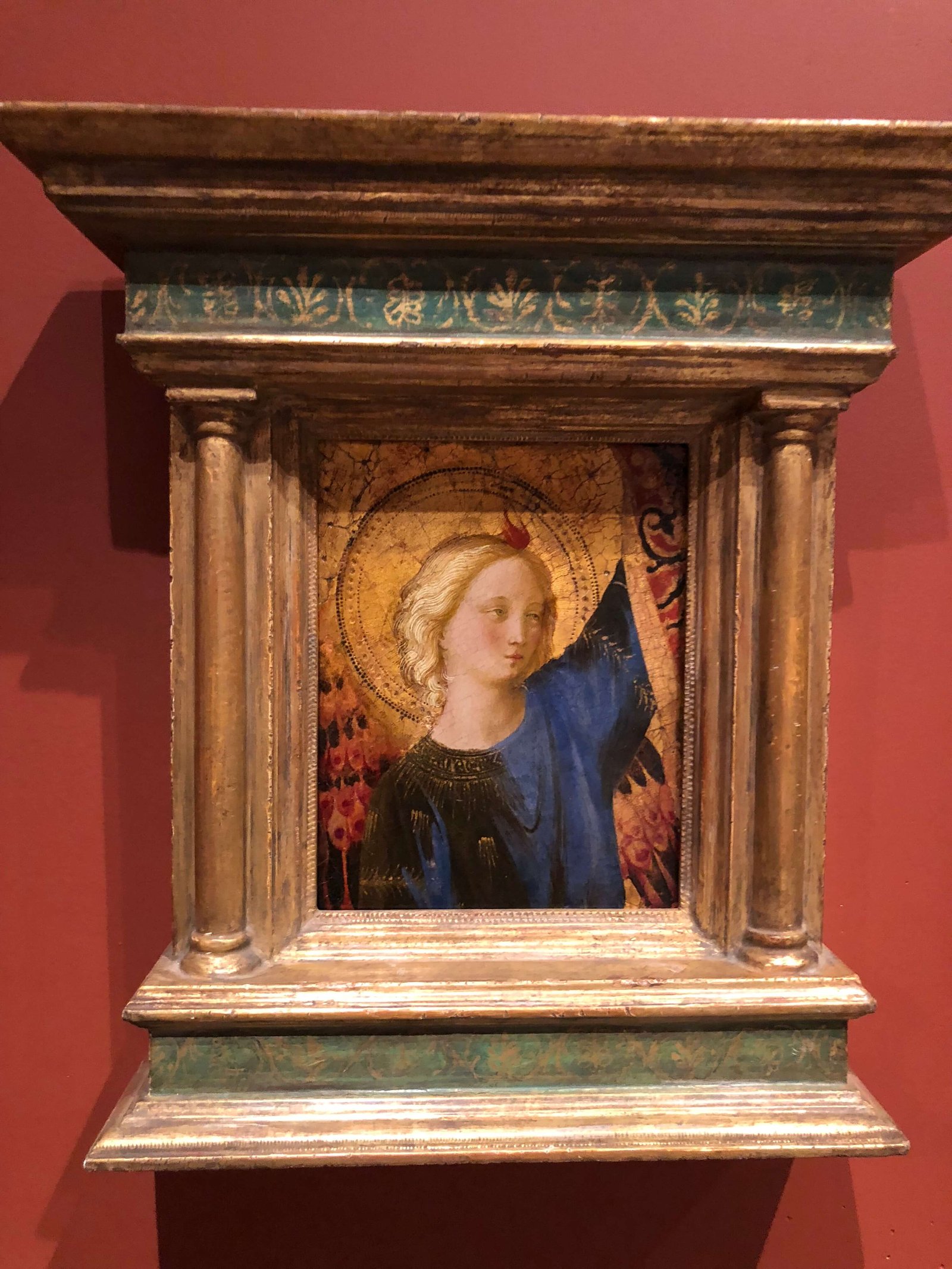
Connecticut Art Trail
The Wadsworth Athenaeum is part of the Connecticut Art Trail. The Trail offers a passport that you can use to get into dozens of museums throughout the state of Connecticut. A passport costs $25 and buys you one admission to every participating museum, valid for a year. Quite a few of the participating museums, like the Yale University Art Gallery, are already free, but most of the others are in the $12-$15 range, so you only have to visit about two paid museums to get your money’s worth. There are also coupons for each museum for things like a free gift or gift shop discount. This was my first Connecticut Art Trail shop, but I hope to visit plenty more in the spring.
